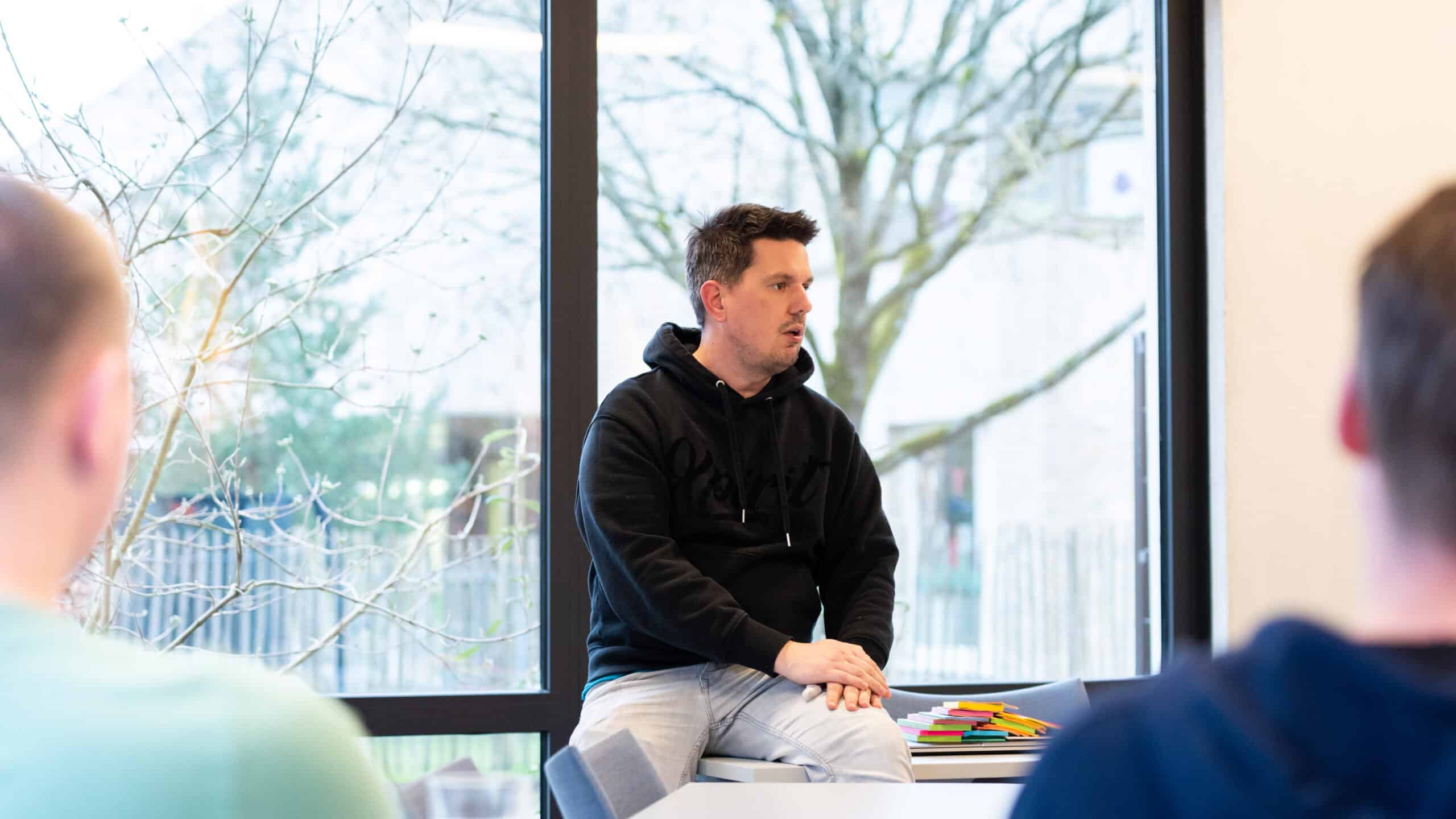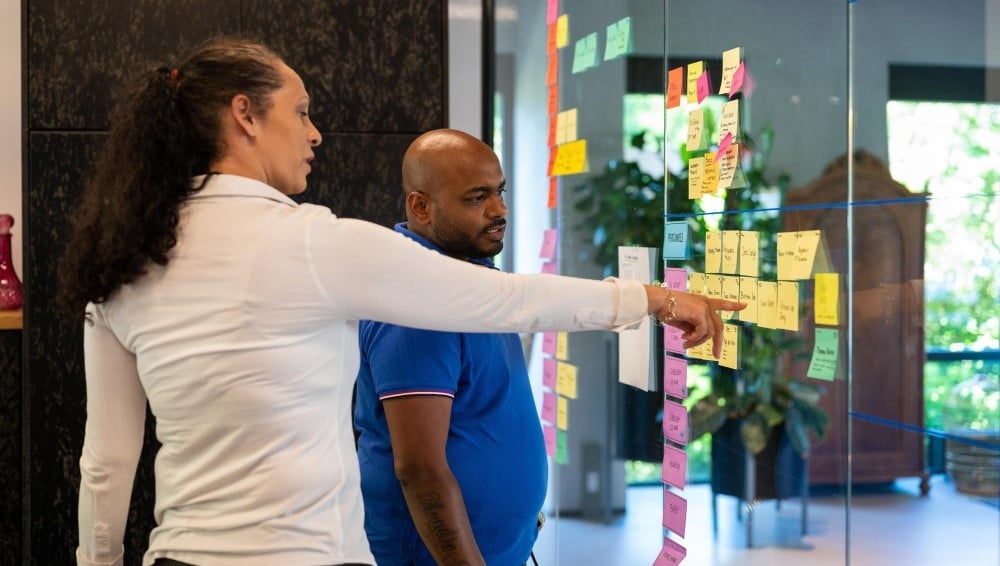Applied DevSecOps
The Netherlands
Ben je klaar om security testen te automatiseren? Je bent op de perfecte training beland! Dompel jezelf in slechts twee intense dagen onder in de wereld van DevSecOps. Van dreigingsmodellen tot kwetsbaarhedenbeheer, wij hebben alles wat u nodig hebt voor uw beveiliging.
Heb je een vraag over de training?
Michiel beantwoordt graag jouw persoonlijke- of in-company gerelateerde vragen.
Neem contact opWat leer je?
In het huidige digitale landschap mag beveiliging geen bijzaak zijn. Met DevSecOps kunt u er zeker van zijn dat beveiliging vanaf het begin een prioriteit is, waardoor kwetsbaarheden in geen enkel onderdeel van de levenscyclus van uw softwareontwikkeling kunnen binnensluipen.
Deze training geeft je een grondig begrip van de principes en praktijken die nodig zijn om beveiliging naadloos te integreren in je softwareontwikkeling en -implementatie. Je leert beveiligingsrisico’s van derde partijen te identificeren en aan te pakken in elk stadium, van het maken van code tot het implementeren in de productie. De training behandelt onderwerpen als dreigingsmodellering, automatisering van applicatiebeveiliging, kwetsbaarheidsbeheer, infrastructuurbeveiliging, identiteits- en toegangsbeheer, geheimenbeheer en beveiligingsmonitoring. Zeg vaarwel tegen veelvoorkomende beveiligingsvalkuilen en hallo tegen een nieuw tijdperk van veilige technologie!
Belangrijkste leerdoelen
- De basisbeginselen van DevSecOps en seucirty modellering.
- Het gebruik van security tools, zoals SAST, DAST, IAST, RASP en WAF.
- Technieken om de beveiliging van uw systeem te valideren.
- De principes van onveranderlijke infrastructuur binnen een beveiligingscontext.
- Strategieën voor het schalen van uw beveiligingsautomatisering.
- Essentiële informatie over IaM en geheimenbeheer.
Programma
We beginnen de training met een inleiding in dreigingsmodellering om te begrijpen hoe kwetsbaar organisaties zijn en het belang van beveiliging te benadrukken. Daarna duiken we in automatisering van applicatiebeveiliging, te beginnen met eenvoudige afhankelijkheidscontroles en de basis van SAST. We gaan verder met het verkennen van verschillende scanners en ervaren hands-on kwetsbaarhedenbeheer met Git en tools zoals DefectDojo.
Op de tweede dag duiken we in de automatisering van infrastructuurbeveiliging, waarbij we ons richten op platformbeveiliging (Docker, hostbeveiliging), identiteits- en toegangsbeheer, geheimenbeheer en beveiligingsmonitoring met ELK.
- Praktisch beheer van kwetsbaarheden: Leer kwetsbaarheden hands-on te beheren met Git en tools zoals DefectDojo.
- Infrastructuurbeveiliging: Leer alles over het beveiligen van platforms, Docker, hostbeveiliging, identiteits- en toegangsbeheer, geheimenbeheer en beveiligingsmonitoring met ELK.
Voor wie is het
Deze training is bedoeld voor security professionals, operations-specialisten en leden van SRE- en/of platformteams. Als dit als jou klinkt en je wilt weten hoe je beveiliging sneller kunt opschalen en veelvoorkomende valkuilen in de beveiliging kunt detecteren en vermijden – dan ben je hier aan het juiste adres!
Vereisten
Basiskennis van het onderwerp is nuttig.
Waarom zou je deze training volgen?
Geef je security carrière een boost
Leer alles over automatisering van beveiliging.
Bescherm je organisatie
Bedreigingsmodellering en kwetsbaarheidsbeheer onder de knie krijgen.
Wees voorbereid
Vaardigheden aanleren voor het schalen van beveiliging in moderne omgevingen.
Hoe ziet het eruit?
Wat moet ik nog meer weten?
Training informatie
Inbegrepen materialen: We zorgen voor al het benodigde studiemateriaal.
Lunch inbegrepen: Een heerlijke lunch en verschillende snacks maken deel uit van de deal!
Talen: De training is in het Engels.
Laptop: Neem een laptop mee met > 8GB RAM, 24GB vrije ruimte op de harde schijf en beheerstoegang voor VM’s met VirtualBox en Docker.
CPE: Deze training geeft recht op 24 CPE-punten.
T&A: Reis- en verblijfkosten zijn niet inbegrepen.
Maak kennis met onze trainer

Marinus Kuivenhoven
Marinus Kuivenhoven is a Security trainer and Head of Security Learning and Coaching at Xebia Academy.




